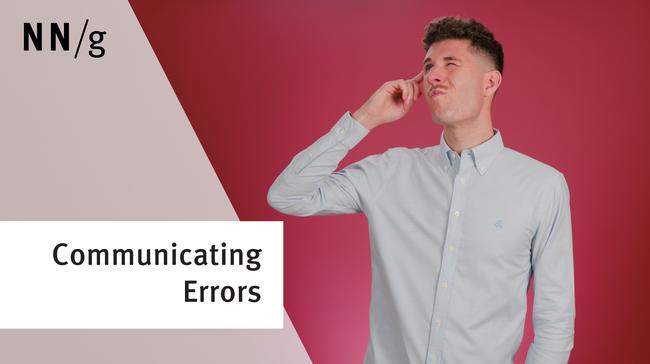About 99% of the time, the presence of Flash on a website constitutes a usability disease. Although there are rare occurrences of good Flash design (it even adds value on occasion), the use of Flash typically lowers usability. In most cases, we would be better off if these multimedia objects were removed.
Flash tends to degrade websites for three reasons: it encourages design abuse, it breaks with the Web's fundamental interaction principles, and it distracts attention from the site's core value.
Encourages Design Abuse
Splash pages were an early sin of abusive Web design. Luckily, almost all professional websites have removed this usability barrier. However, we're now seeing the rise of Flash intros that have the same obnoxious effect: They delay users' ability to get what they came for. On the upside, most Flash intros feature a "skip intro" button. However, their very existence encourages design abuse in several ways.
First, Flash encourages gratuitous animation: Since we can make things move, why not make things move? Animation clearly has its place in online communication. However, as my 1995 guidelines discuss, that place is limited.
Second, one of the Web's most powerful features is that it lets users control their own destiny. Users go where they want, when they want. This quality is what makes the Web so usable, despite its many usability problems. Unfortunately, many Flash designers decrease the granularity of user control and revert to presentation styles that resemble television rather than interactive media. Websites that force users to sit through sequences with nothing to do will be boring and pacifying, regardless of how cool they look.
Third, many Flash designers introduce their own nonstandard GUI controls. How many scrollbar designs do we need? Actually, we probably do need a new scrollbar design for online content; the current scrollbar was designed for office automation content that users wrote themselves. However, the specification of a new GUI widget is a major human-factors exercise. The current Macintosh and Windows scrollbars emerged after the world's best interaction designers worked for years testing numerous design alternatives. A new scrollbar designed over the weekend is likely to get many details wrong. And, even if the new design was workable, it would still reduce a site's overall usability because users would have to figure out how it worked. They know how to operate the standard widget. When you use standards, users can focus on content and their reasons for visiting your site. Deviate, and you reduce their feeling of environmental mastery.
None of these usability problems are inherent in Flash. You can design usable multimedia objects that comply with the guidelines and are easy to use. The problem is simply that current Flash design tends to encourage abuse.
Breaks Web Fundamentals
The second set of issues relates to the very notion of using a plug-in rather than standard Web technology. In the future, multimedia features may well be better integrated with browsers and thus these problems will be solved. For now, though, the fact that Flash is not standard HTML creates a host of nasty usability issues:
- The "Back" button does not work. If you navigate within a Flash object, the standard backtracking method takes you out of the multimedia object and not, as expected, to the previous state.
- Link colors don't work. Given this, you cannot easily see where you've been and which links you've yet to visit. This lack of orientation creates navigational confusion.
- The "Make text bigger/smaller" button does not work. Users are thus forced to read text in the designer-specified font size, which is almost always too small since designers tend to have excellent vision.
- Flash reduces accessibility for users with disabilities.
- The "Find in page" feature does not work. In general, Flash integrates poorly with search.
- Internationalization and localization is complicated. Local websites must enlist a Flash professional to translate content. Also, text that moves is harder to read for users who lack fluency in the language.
Distracts from a Site's Core Values
Perhaps the worst problem with Flash is that its use consumes resources that would be better spent enhancing the website's core value by:
- Frequently updating content (Flash content tends to be created once and then left alone).
- Providing informative content that answers users' key questions at all depth levels (Flash content is typically superficial).
- Identifying better ways to support customers by task analyzing their real problems (Flash is typically created by outside agents who don't understand the business).
If Flash was cheap to produce and if all content creators could make a Flash object as easily as they write a standard Web page, then perhaps many of these problems would be alleviated. For now, they remain serious issues. I thus recommend that Web designers interested in enhancing usability and their site's overall business presence use Flash sparingly.



